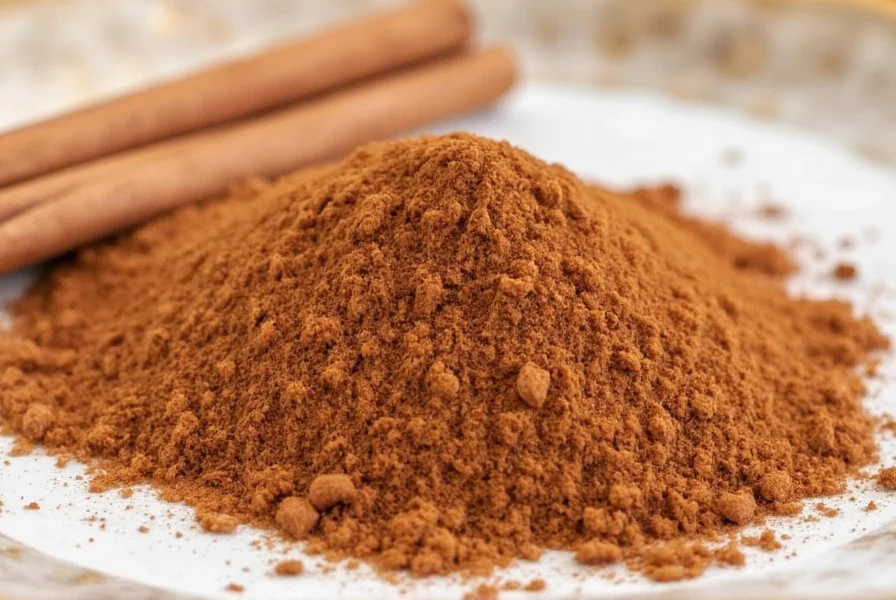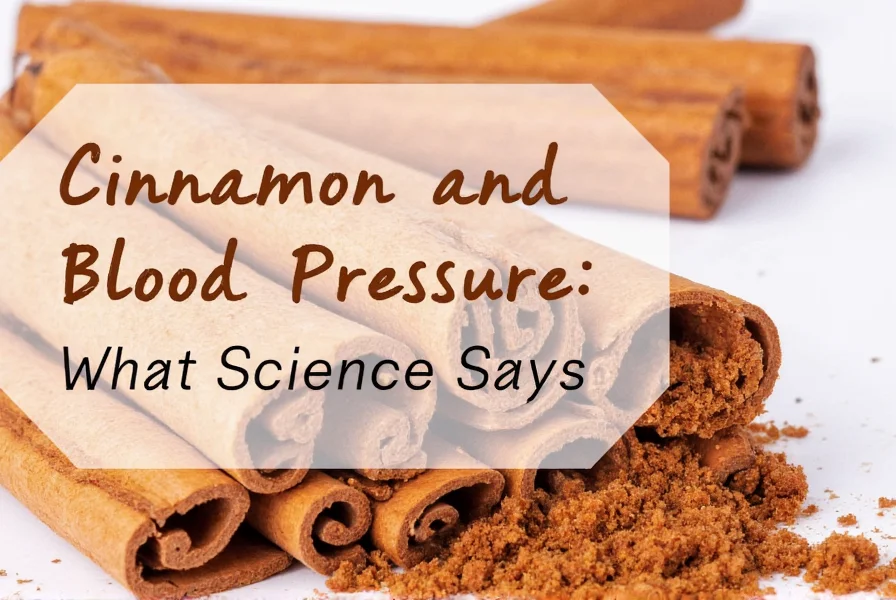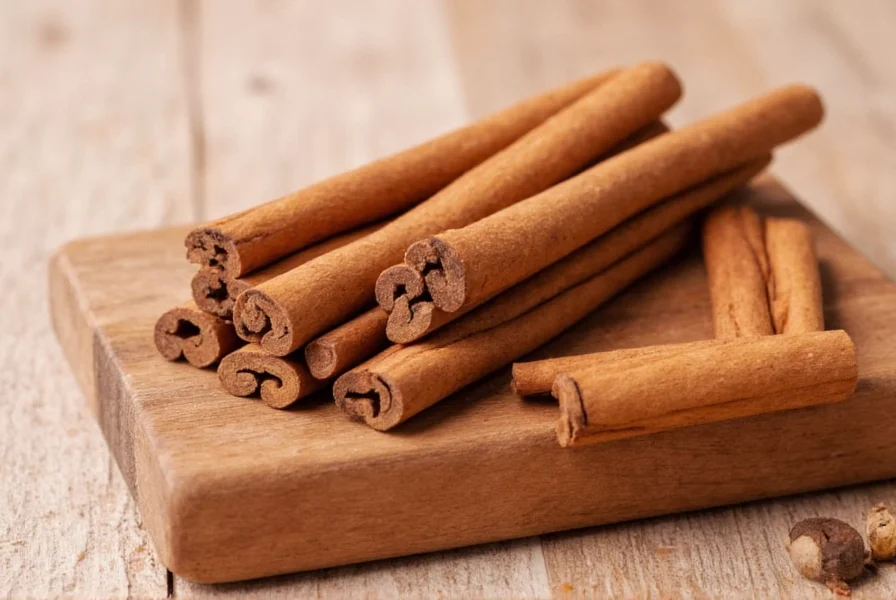Current scientific evidence suggests cinnamon may have modest blood pressure-lowering effects, particularly in people with prediabetes or type 2 diabetes, but it should not replace conventional hypertension treatments. Multiple studies show small reductions in systolic and diastolic blood pressure, though results vary and more high-quality human trials are needed before definitive recommendations can be made.
Many people wonder whether this common kitchen spice could serve as a natural remedy for high blood pressure. As researchers continue investigating cinnamon's potential cardiovascular benefits, it's important to separate scientific findings from anecdotal claims. This article examines what current medical research actually says about cinnamon and blood pressure regulation.
How Cinnamon Might Affect Blood Pressure
Cinnamon contains bioactive compounds like cinnamaldehyde and polyphenols that may influence cardiovascular health through several mechanisms. These compounds appear to improve endothelial function—the lining of blood vessels—which helps regulate blood flow and pressure. Some research indicates cinnamon may also reduce oxidative stress and inflammation, both of which contribute to hypertension development.
Animal studies have shown promising results, with cinnamon extracts demonstrating vasodilatory effects that could lower blood pressure. However, translating these findings to humans requires careful consideration of dosage, cinnamon type, and individual health factors.

Review of Human Clinical Studies
Several human studies have investigated cinnamon's effects on blood pressure with mixed but generally positive results:
| Study | Participants | Cinnamon Dosage | Results |
|---|---|---|---|
| 2020 Meta-Analysis | 754 participants across 9 studies | 1-6g daily for 8-12 weeks | Small but significant reduction in systolic BP (−1.87 mmHg) and diastolic BP (−1.37 mmHg) |
| 2019 Diabetes Study | 50 type 2 diabetes patients | 3g daily for 12 weeks | Significant reduction in systolic BP (−5.39 mmHg) compared to placebo |
| 2018 Prediabetes Trial | 60 prediabetic adults | 1.5g daily for 12 weeks | Modest improvement in blood pressure, particularly in those with higher baseline readings |
The most consistent findings appear in populations with metabolic conditions like diabetes or prediabetes. For otherwise healthy individuals with normal blood pressure, cinnamon supplementation typically shows minimal effects.
Cinnamon Types and Dosage Considerations
Not all cinnamon is created equal when considering potential health benefits. Two main varieties exist:
- Ceylon cinnamon (Cinnamomum verum) - Often called "true cinnamon," contains lower levels of coumarin, a compound that can cause liver issues in high doses
- Cassia cinnamon - More common and less expensive, but contains higher coumarin levels
For potential blood pressure benefits, studies typically use 1-6 grams daily (approximately ¼ to 1½ teaspoons), with most research focusing on 3 grams per day. Long-term safety data remains limited, particularly for Cassia cinnamon due to its coumarin content.
Safety and Medication Interactions
While cinnamon is generally safe as a food spice, therapeutic supplementation requires caution:
- High doses of Cassia cinnamon may cause liver toxicity due to coumarin content
- Cinnamon may interact with blood thinners like warfarin
- Potential interactions with diabetes medications requiring blood sugar monitoring
- May enhance effects of conventional blood pressure medications
Individuals with liver conditions or those taking medications should consult healthcare providers before using cinnamon supplements. Pregnant women should avoid therapeutic doses due to insufficient safety data.

Cinnamon vs. Conventional Blood Pressure Treatments
While research shows modest benefits, cinnamon's effects are significantly smaller than those achieved with standard hypertension medications. Most effective pharmaceutical treatments can reduce systolic blood pressure by 10-20 mmHg, compared to cinnamon's typical 1-5 mmHg reduction.
Lifestyle modifications remain the cornerstone of blood pressure management:
- Regular physical activity (150 minutes weekly)
- DASH diet (fruits, vegetables, whole grains, low-fat dairy)
- Sodium restriction (under 2,300 mg daily)
- Weight management
- Stress reduction techniques
Cinnamon might serve as a complementary approach for some individuals, but should never replace prescribed treatments for diagnosed hypertension.
Practical Recommendations
Based on current evidence, here's how to approach cinnamon for blood pressure concerns:
- Choose Ceylon cinnamon for regular therapeutic use to minimize coumarin exposure
- Start with 1 gram daily (about ¼ teaspoon) and monitor your response
- Consider adding cinnamon to existing healthy habits rather than relying on it alone
- Track your blood pressure regularly if experimenting with cinnamon supplementation
- Consult your healthcare provider before using cinnamon therapeutically, especially if taking medications
Remember that dietary approaches work best as part of comprehensive lifestyle management. The most significant blood pressure improvements come from multiple coordinated changes rather than single interventions.
Conclusion
Current research suggests cinnamon may offer modest blood pressure benefits, particularly for individuals with metabolic conditions like diabetes. However, the effects are relatively small compared to conventional treatments and lifestyle modifications. More rigorous, long-term human studies are needed to determine optimal dosing, cinnamon type, and which populations might benefit most.
While adding cinnamon to your diet is generally safe and may provide some cardiovascular benefits, it should complement—not replace—proven hypertension management strategies. Always consult healthcare professionals before making significant changes to your blood pressure management approach.
Does cinnamon lower blood pressure immediately after consumption?
No, cinnamon does not lower blood pressure immediately. Research shows effects typically require consistent daily consumption over several weeks (8-12 weeks in most studies) to observe modest reductions. Blood pressure changes from cinnamon supplementation develop gradually, not acutely.
How much cinnamon should I take daily for blood pressure benefits?
Most clinical studies showing blood pressure benefits used 1-6 grams (approximately ¼ to 1½ teaspoons) of cinnamon daily, with 3 grams being the most common dose. However, long-term safety data is limited, and Cassia cinnamon contains coumarin which can be harmful in high doses. Consult your healthcare provider for personalized recommendations.
Can I replace my blood pressure medication with cinnamon?
No, you should never replace prescribed blood pressure medication with cinnamon. The blood pressure reductions from cinnamon are significantly smaller than those achieved with standard medications. Cinnamon may potentially complement conventional treatment but should only be used alongside—not instead of—prescribed therapies under medical supervision.
Which type of cinnamon is best for blood pressure management?
Ceylon cinnamon (Cinnamomum verum) is generally preferred for therapeutic use because it contains significantly lower levels of coumarin compared to the more common Cassia cinnamon. Coumarin can cause liver issues in high doses, making Ceylon a safer option for regular consumption at therapeutic doses.
How long does it take to see blood pressure results from cinnamon?
Most clinical studies showing blood pressure benefits required 8-12 weeks of consistent daily cinnamon consumption. Individual responses vary based on baseline blood pressure, health status, cinnamon type, and dosage. Regular blood pressure monitoring is recommended if using cinnamon for this purpose.











 浙公网安备
33010002000092号
浙公网安备
33010002000092号 浙B2-20120091-4
浙B2-20120091-4